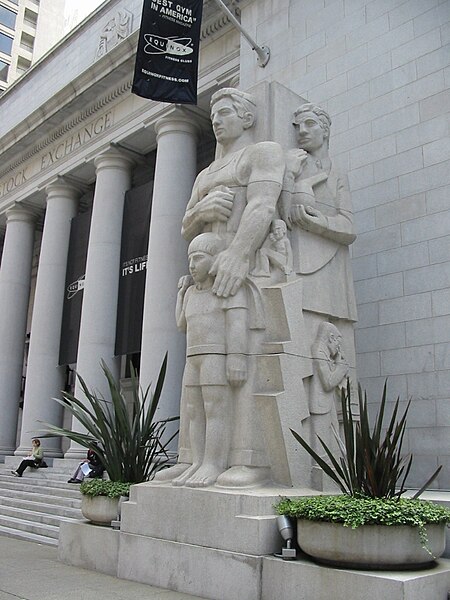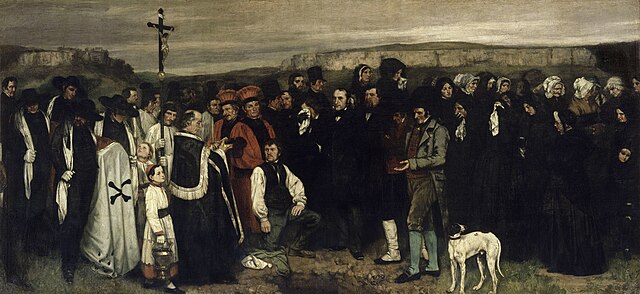Ralph Ward Stackpole was an American sculptor, painter, muralist, etcher and art educator, San Francisco's leading artist during the 1920s and 1930s. Stackpole was involved in the art and causes of social realism, especially during the Great Depression, when he was part of the Public Works of Art Project, Federal Art Project of the Works Progress Administration, and the Treasury Department's Section of Painting and Sculpture. Stackpole was responsible for recommending that architect Timothy L. Pflueger bring Mexican muralist Diego Rivera to San Francisco to work on the San Francisco Stock Exchange and its attached office tower in 1930–31. His son Peter Stackpole became a well-known photojournalist.
Stackpole in his studio in 1940 photo by Peter Stackpole for LIFE magazine
"Tympanum group of Varied Industries" (1915)
Site placement of Industry (1932) shows its position at the right of the former San Francisco Stock Exchange building.
original 1915 version of Reverence
Social realism is the term used for work produced by painters, printmakers, photographers, writers and filmmakers that aims to draw attention to the real socio-political conditions of the working class as a means to critique the power structures behind these conditions. While the movement's characteristics vary from nation to nation, it almost always uses a form of descriptive or critical realism.
Grant Wood's magnum opus American Gothic, 1930, has become a widely known (and often parodied) icon of social realism.
Charles de Groux, The Blessing, 1860
Jacob Riis, Bandit's Roost, 1888, from How the Other Half Lives. Bandit's Roost at 59½ Mulberry Street was considered the most crime-ridden part of New York City.
Gustave Courbet, A Burial At Ornans








